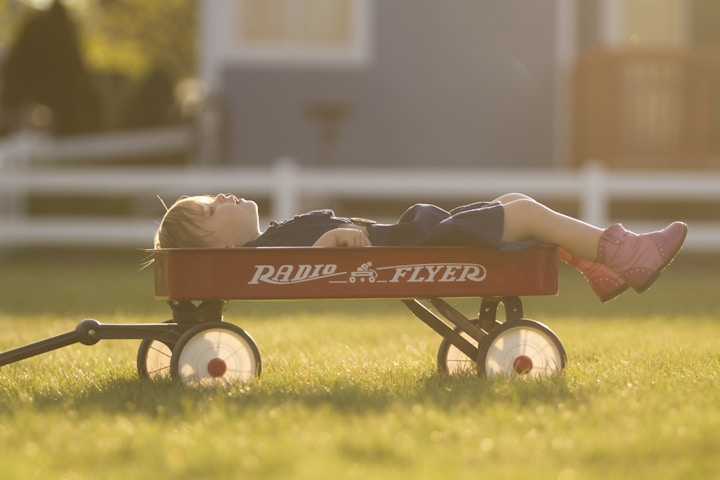10 Effective Ways to Manage a Crying Child
Discover 10 practical, expert-backed tips for managing a crying child. Learn how to calm your child, reduce frustration, and foster emotional connection effectively.

As a parent, one of the most challenging moments is when your child is crying inconsolably. It can be stressful and emotionally overwhelming. But understanding why children cry and how to respond appropriately is essential for both their emotional development and your peace of mind.
Drawing insights from expert parenting books, this blog will explore 10 practical ways to manage a crying child and offer emotional support during tough moments.
Table of Contents
- Understand Why Your Child is Crying
- Stay Calm and Composed
- Acknowledge and Validate Their Feelings
- Use Distraction as a Tool
- Offer Comfort through Physical Touch
- Create a Safe and Comfortable Environment
- Teach Emotional Regulation over Time
- Consider Their Basic Needs
- Introduce Calming Techniques
- Be Patient and Empathetic
Understand Why Your Child is Crying
One of the first steps in managing a crying child is understanding the reason behind the tears. Is your child hungry, tired, or frustrated? Identifying the root cause helps you respond effectively.
"Crying is a baby’s first way of communicating. It’s their language." – Harvey Karp, The Happiest Baby on the Block
Understanding your child’s cues is critical. Keep in mind that crying is their way of expressing unmet needs or discomfort.
If your toddler is crying because they’re overstimulated in a noisy environment, moving them to a quiet space can instantly soothe their senses.
Stay Calm and Composed
Children, especially infants and toddlers, are highly sensitive to their parents' emotions. If you react with panic or frustration, your child may cry even more. Staying calm helps regulate both your emotions and theirs.
"Children learn to calm down by watching their parents regulate their own emotions." – Dr. Daniel J. Siegel, The Whole-Brain Child
Your calm demeanor is a model for how your child will handle stress in the future. When you stay composed, you provide a sense of safety and reassurance.
Acknowledge and Validate Their Feelings
It can be tempting to shush or ignore your child’s crying, but acknowledging their emotions is important for their emotional development. Let them know you hear and understand them.
"When we acknowledge a child's feelings, we show them that their emotions are valid, which builds emotional intelligence."
— Adele Faber and Elaine Mazlish, How to Talk So Kids Will Listen & Listen So Kids Will Talk
If your child is upset because they can’t have a toy, you might say, “I can see you’re feeling sad because we’re not buying the toy today. It’s okay to feel sad.”
Acknowledging feelings doesn’t mean giving in, but it helps the child feel understood and calms them down.
Use Distraction as a Tool
Distraction can be an effective strategy for younger children. Redirecting their attention to a toy, game, or activity often shifts their focus away from the cause of their distress.
"Young children are easily distracted because their attention span is still developing. Use this to your advantage." – Tracy Hogg, The Baby Whisperer
If your child is crying because they are frustrated with a puzzle, you could offer them a different game or even take them outside for fresh air.
Distraction works especially well with toddlers. Keeping toys or activities handy can help you manage these moments more effectively.
Offer Comfort through Physical Touch

Physical contact like hugging, holding, or even gently patting a child on the back can be one of the most powerful tools for soothing a crying child.
"Physical touch is crucial for children, particularly during moments of stress, as it reassures them that they are safe." – Harvey Karp, The Happiest Baby on the Block
When your child is crying due to separation anxiety, a simple hug or holding them close can make them feel more secure and calm them down faster.
Create a Safe and Comfortable Environment
Sometimes a child’s tears are a result of feeling overwhelmed by their surroundings. Creating a calm, quiet, and comfortable environment can work wonders in soothing them.
"Children feel safe in predictable, calm environments. The more structured the environment, the less likely they are to cry out of overwhelm." – Dr. Shefali Tsabary, The Conscious Parent
If your child is crying in a crowded, noisy space, moving them to a quieter area can help them relax.
Teach Emotional Regulation over Time
Teaching children how to manage their emotions is one of the greatest gifts a parent can offer. Over time, children can learn techniques to regulate their own emotions, like deep breathing or identifying what is making them upset.
"Children develop emotional regulation by learning from how their parents respond to emotions." – Daniel J. Siegel, The Whole-Brain Child
If your child is crying out of frustration, teach them to take a few deep breaths before responding to the situation. Model this behavior by doing it together. While it takes time, teaching your child emotional regulation will lead to fewer outbursts and less crying as they grow.
Consider Their Basic Needs
Sometimes, crying is as simple as a signal that one of your child’s basic needs isn’t being met—hunger, tiredness, thirst, or even a wet diaper.
"Often, the root cause of a child’s crying is physiological discomfort." – Penelope Leach, Your Baby & Child
If your child is crying before bedtime, they might be overtired. Establishing a predictable bedtime routine can help avoid tears caused by fatigue.
Introduce Calming Techniques

There are many proven calming techniques you can use to soothe a crying child. These might include white noise, lullabies, rocking motions, or a favorite blanket.
"Babies are used to constant sound from the womb, which is why white noise can be so effective in calming them." – Harvey Karp, The Happiest Baby on the Block
If your baby is crying uncontrollably, try swaddling them, gently rocking them, and using white noise or calming music to soothe them.
Be Patient and Empathetic
Lastly, one of the most important things you can do when your child is crying is to remain patient. Crying is a normal part of childhood, and being empathetic during these moments helps build a strong bond with your child.
"Patience is key in parenting. Children are still learning how to navigate the world, and sometimes crying is their only way to express that they need help." – Brené Brown, The Gifts of Imperfection
If your child is crying out of frustration with a new task, instead of solving the problem for them, offer encouragement and support as they work through it. Empathy and patience teach your child that it’s okay to cry and that they have your support when they need it.
Managing a crying child can be difficult, but with the right techniques, it’s an opportunity to build trust, emotional intelligence, and resilience in your child. By understanding their emotions, offering comfort, and teaching them how to regulate their feelings, you help them grow into confident, emotionally healthy individuals.
Remember, every child is different, and what works for one may not work for another. Try a mix of these strategies and observe what best helps your child through their tears.
Get quick audio summaries of your favorite parenting books from Tales.so. With a collection of thousands of book, you are sure to find something that interest you.



